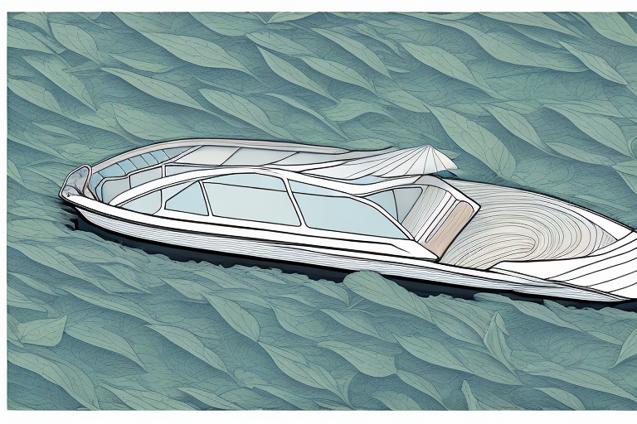
Discover how using eco-friendly boat covers and tarps can help reduce your environmental footprint and protect marine ecosystems while maintaining the longevity and durability of your boat.
The Impact of Using Eco-Friendly Boat Covers and Tarps
As we embrace the freedom and adventure of sailing with our families, it’s essential to consider the environmental impact of our choices. One area where we can make a significant difference is in the maintenance of our boats, specifically in the use of eco-friendly boat covers and tarps. In this article, we will explore the benefits of using environmentally friendly materials, the different types of eco-friendly boat covers and tarps available, and tips for choosing the right one for your boat.
Why Choose Eco-Friendly Boat Covers and Tarps?
Traditional boat covers and tarps are often made from materials like PVC (polyvinyl chloride) and other synthetic materials that can have a negative impact on the environment. These materials can release harmful chemicals into the air and water, contributing to pollution and the degradation of marine ecosystems. By choosing eco-friendly boat covers and tarps, we can reduce our environmental footprint and protect the beautiful oceans and waterways we love to explore.
Benefits of Eco-Friendly Boat Covers and Tarps
-
Reduced Environmental Impact: Eco-friendly boat covers and tarps are made from materials that are less harmful to the environment. They are often biodegradable, recyclable, or made from renewable resources, reducing the amount of waste that ends up in landfills and the ocean.
-
Improved Air and Water Quality: Traditional boat covers and tarps can release harmful chemicals into the air and water, contributing to air and water pollution. Eco-friendly options are made from materials that do not release these harmful chemicals, helping to maintain cleaner air and water for ourselves and marine life.
-
Durability and Longevity: Many eco-friendly boat covers and tarps are made from high-quality materials that are designed to last, reducing the need for frequent replacements and minimizing waste.
-
Support for Sustainable Practices: By choosing eco-friendly boat covers and tarps, we are supporting companies and manufacturers that prioritize sustainability and environmentally friendly practices.
Types of Eco-Friendly Boat Covers and Tarps
There are several types of eco-friendly boat covers and tarps available, each with its own unique benefits and features. Here are some of the most popular options:
1. Recycled Materials
Boat covers and tarps made from recycled materials, such as PET (polyethylene terephthalate) from plastic bottles, are an excellent eco-friendly option. These materials are durable, water-resistant, and help to reduce waste by repurposing materials that would otherwise end up in landfills.
2. Natural Fibers
Natural fibers like cotton, hemp, and linen are renewable resources that can be used to create eco-friendly boat covers and tarps. These materials are biodegradable and often treated with natural, environmentally friendly coatings to enhance their water resistance and durability.
3. Organic Materials
Organic materials, such as organic cotton or hemp, are grown without the use of harmful pesticides and chemicals, making them a more environmentally friendly option. Organic boat covers and tarps are often treated with natural coatings to improve their water resistance and durability.
4. Biodegradable Materials
Biodegradable boat covers and tarps are made from materials that will break down naturally over time, reducing the amount of waste that ends up in landfills and the ocean. These materials are often plant-based and can include options like PLA (polylactic acid), a biodegradable plastic made from renewable resources like cornstarch.
Tips for Choosing the Right Eco-Friendly Boat Cover or Tarp
When selecting an eco-friendly boat cover or tarp, consider the following factors to ensure you choose the best option for your boat and the environment:
-
Material: Consider the type of eco-friendly material that best suits your needs and preferences. This may include recycled materials, natural fibers, organic materials, or biodegradable options.
-
Size and Fit: Ensure the boat cover or tarp is the correct size and fit for your boat. A properly fitting cover will provide better protection and reduce the risk of damage to your boat.
-
Water Resistance: Look for eco-friendly boat covers and tarps that have been treated with water-resistant coatings or are made from naturally water-resistant materials to protect your boat from the elements.
-
UV Protection: Exposure to the sun’s UV rays can cause damage to your boat’s surfaces and materials. Choose a boat cover or tarp that offers UV protection to help prevent fading and deterioration.
-
Breathability: A breathable boat cover or tarp will allow moisture to escape, reducing the risk of mold and mildew growth. Look for eco-friendly materials that offer breathability while still providing protection from the elements.
-
Durability: Choose a boat cover or tarp made from high-quality, durable materials that will withstand the elements and provide long-lasting protection for your boat.
-
Ease of Use: Consider how easy the boat cover or tarp is to install, remove, and store. Look for options that are lightweight and easy to handle, as well as those that come with storage bags or cases for convenient storage when not in use.
Conclusion
By choosing eco-friendly boat covers and tarps, we can reduce our environmental impact and protect the oceans and waterways we love to explore. With a variety of materials and options available, there is an eco-friendly boat cover or tarp to suit every sailor’s needs and preferences. By considering factors like material, size, water resistance, UV protection, breathability, durability, and ease of use, we can select the perfect eco-friendly boat cover or tarp for our vessels and continue to enjoy the freedom and adventure of sailing while minimizing our impact on the environment.